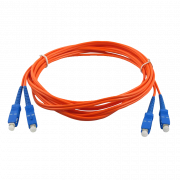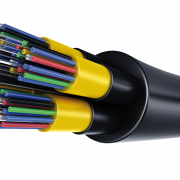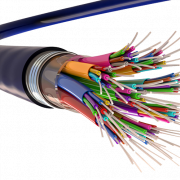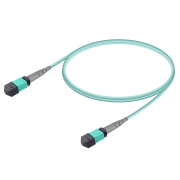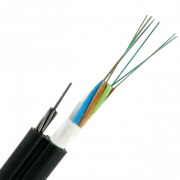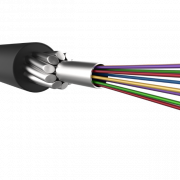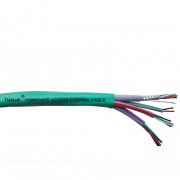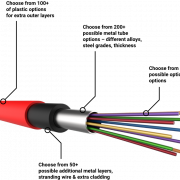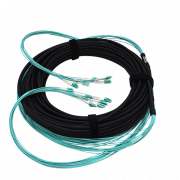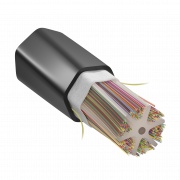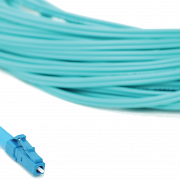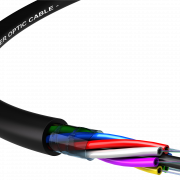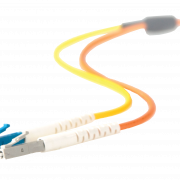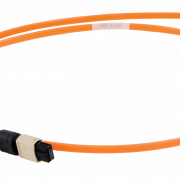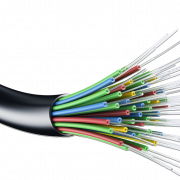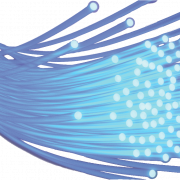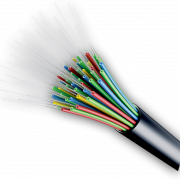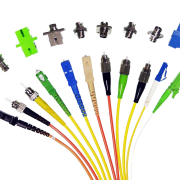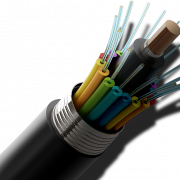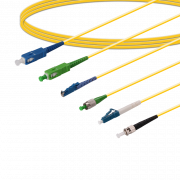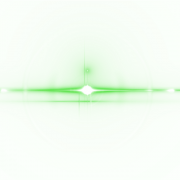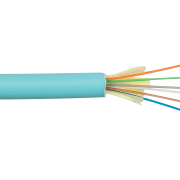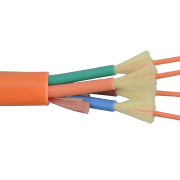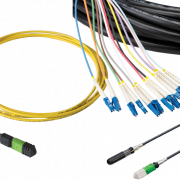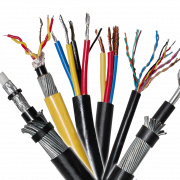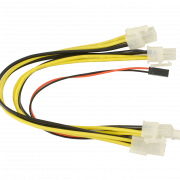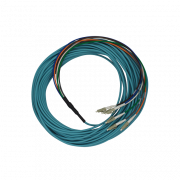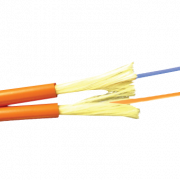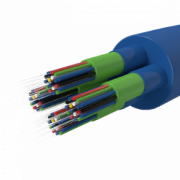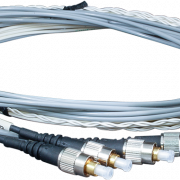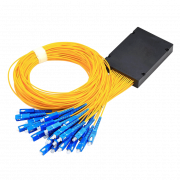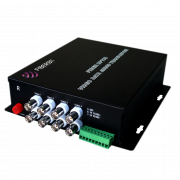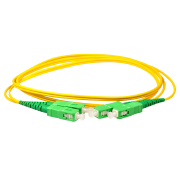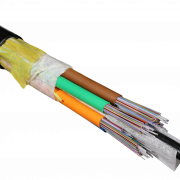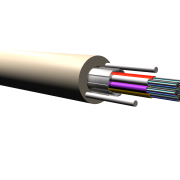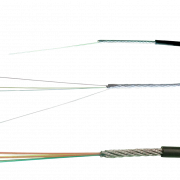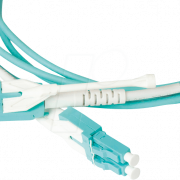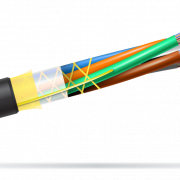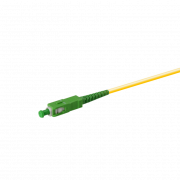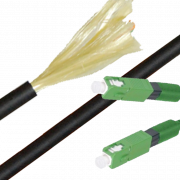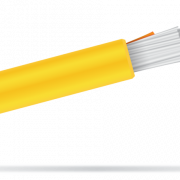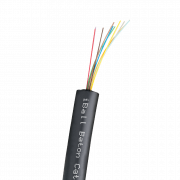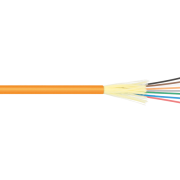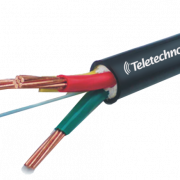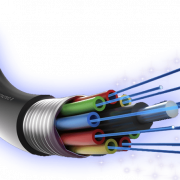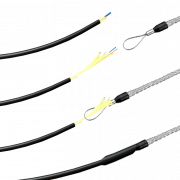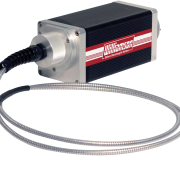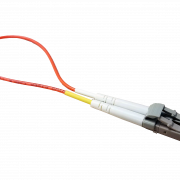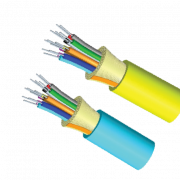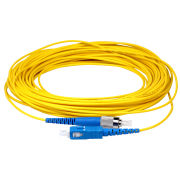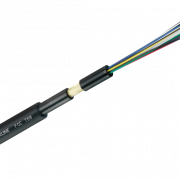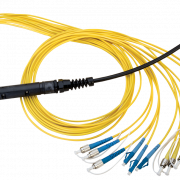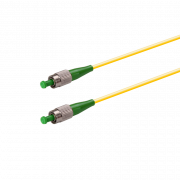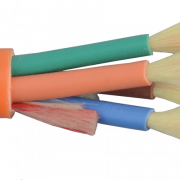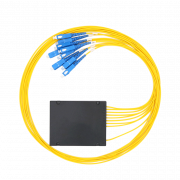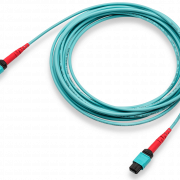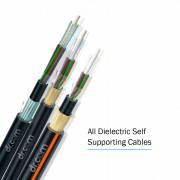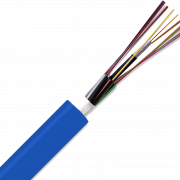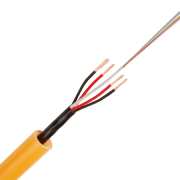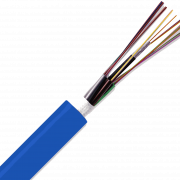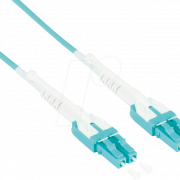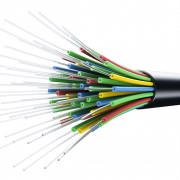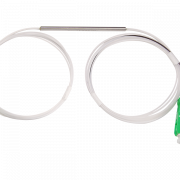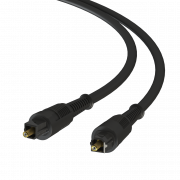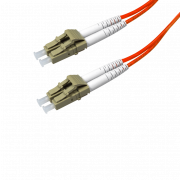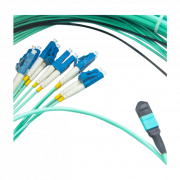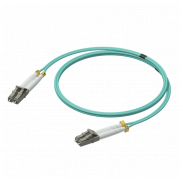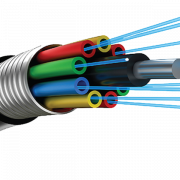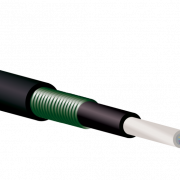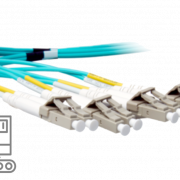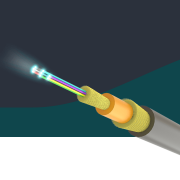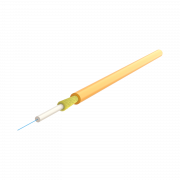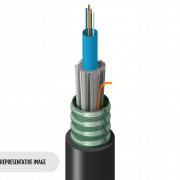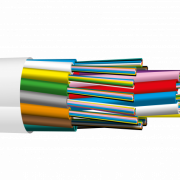Download top and best high-quality free Fiber Cable PNG Transparent Images backgrounds available in various sizes. To view the full PNG size resolution click on any of the below image thumbnail.
License Info: Creative Commons 4.0 BY-NC
A fiber-optic cable, also known as an optical fiber cable, is a cable that looks like an electrical wire but contains one or more optical fibers for light transmission. The optical fiber components are usually separately coated with plastic layers and housed in a protective tube that is appropriate for the cable’s usage environment. Long-distance communications, for example, or delivering a high-speed data link between various areas of a building, require different types of cable.
Because of the difference in refractive index between the core and the cladding layer, optical fiber is used for total internal reflection. A coating of acrylate polymer or polyimide is generally applied to the cladding in practical fibers. Although this coating protects the fiber from damage, it has no effect on its optical waveguide characteristics. To construct the cable core, a strong resin buffer layer or core tube(s) is extruded around individual coated fibers (or fibers arranged into ribbons or bundles). Depending on the application, many layers of protective wrapping are applied to create the cable. Light-absorbing (“dark”) glass is occasionally used between the fibers in rigid fiber assemblies to prevent light from leaking out of one fiber from entering another. In fiber bundle imaging applications, this decreases crosstalk between the fibers or flare.
For interior applications, the jacketed fiber is usually encased in a lightweight plastic shell, together with a bundle of flexible fibrous polymer strength components like aramid (e.g., Twaron or Kevlar). Each end of the cable can be terminated with a specific optical fiber connection to make connecting and disconnecting it from transmitting and receiving devices a breeze.
A considerably more durable cable structure is necessary for usage in more demanding situations. The fiber is placed helically into semi-rigid tubes in loose-tube construction, allowing the cable to extend without straining the fiber.
This shields the fiber from the strain caused by laying and temperature fluctuations. The fiber in loose-tube fiber can be either “dry block” or “gel-filled.” The dry block provides less fiber protection than gel-filled block, but it is significantly less expensive.
The fiber may be incorporated in a strong polymer jacket instead of a loose tube, which is known as “tight buffer” construction. Tight buffer cables are available for a number of purposes, although “Breakout” and “Distribution” are the most popular.
A ripcord, two non-conductive dielectric strengthening elements (usually glass rod epoxy), an aramid yarn, and 3 mm buffer tubing with an extra layer of Kevlar around each fiber are all standard components of breakout cables. The ripcord is a strong yarn cord that runs parallel to the cable jacket(s) and is used to remove the jacket(s). Each fiber in a distribution cable is surrounded by a 900-micrometer buffer coating, a ripcord, and an overall Kevlar wrapping. Additional steel strength elements are frequently bundled with these fiber units, again with a helical twist to allow for stretching.
Protecting the fiber from water damage is a major problem in outdoor cabling. This is achieved by encircling the fiber with physical barriers such as copper tubes and water-repellent jelly or water-absorbing powder.
Download Fiber Cable PNG images transparent gallery.
- Fiber Cable Internet PNG Picture
Resolution: 800 × 800
Size: 252 KB
Image Format: .png
Download
- Optical Fiber Cable PNG HD Image
Resolution: 1417 × 651
Size: 470 KB
Image Format: .png
Download
- Fiber Cable Internet PNG Free Image
Resolution: 800 × 499
Size: 341 KB
Image Format: .png
Download
- Fiber Cable PNG HD Image
Resolution: 900 × 900
Size: 149 KB
Image Format: .png
Download
- Fiber Cable Internet PNG File
Resolution: 666 × 673
Size: 125 KB
Image Format: .png
Download
- Optical Fiber Cable PNG Pic
Resolution: 1200 × 920
Size: 144 KB
Image Format: .png
Download
- Fiber Cable Splice PNG Clipart
Resolution: 1000 × 620
Size: 138 KB
Image Format: .png
Download
- Fiber Cable Internet PNG HD Image
Resolution: 2048 × 1536
Size: 343 KB
Image Format: .png
Download
- Fiber Cable Network PNG Picture
Resolution: 870 × 702
Size: 141 KB
Image Format: .png
Download
- Fiber Cable Internet PNG Pic
Resolution: 780 × 520
Size: 265 KB
Image Format: .png
Download
- Fiber Cable Internet
Resolution: 5120 × 4096
Size: 261 KB
Image Format: .png
Download
- Optical Fiber Cable
Resolution: 1953 × 1184
Size: 1459 KB
Image Format: .png
Download
- Optical Fiber Cable PNG Download Image
Resolution: 4185 × 2798
Size: 156 KB
Image Format: .png
Download
- Fiber Cable
Resolution: 2928 × 2108
Size: 1453 KB
Image Format: .png
Download
- Fiber Cable Network
Resolution: 2916 × 1444
Size: 1204 KB
Image Format: .png
Download
- Fiber Cable Internet PNG Download Image
Resolution: 1748 × 1036
Size: 1038 KB
Image Format: .png
Download
- Optical Fiber Cable PNG High Quality Image
Resolution: 1462 × 697
Size: 881 KB
Image Format: .png
Download
- Optical Fiber Cable PNG Images
Resolution: 1039 × 946
Size: 729 KB
Image Format: .png
Download
- Fiber Cable Internet PNG High Quality Image
Resolution: 1236 × 810
Size: 635 KB
Image Format: .png
Download
- Optical Fiber Cable PNG Image File
Resolution: 745 × 564
Size: 315 KB
Image Format: .png
Download
- Fiber Cable PNG Pic
Resolution: 800 × 800
Size: 242 KB
Image Format: .png
Download
- Optical Fiber Cable PNG Photo
Resolution: 1003 × 684
Size: 255 KB
Image Format: .png
Download
- Fiber Cable PNG Download Image
Resolution: 1600 × 900
Size: 614 KB
Image Format: .png
Download
- Fiber Cable PNG High Quality Image
Resolution: 1600 × 900
Size: 459 KB
Image Format: .png
Download
- Fiber Cable PNG Images
Resolution: 848 × 545
Size: 377 KB
Image Format: .png
Download
- Fiber Cable PNG Image File
Resolution: 1500 × 1197
Size: 1442 KB
Image Format: .png
Download
- Fiber Cable Network PNG Free Image
Resolution: 1472 × 1250
Size: 706 KB
Image Format: .png
Download
- Fiber Cable Network PNG File
Resolution: 700 × 657
Size: 266 KB
Image Format: .png
Download
- Fiber Cable Internet PNG Images
Resolution: 970 × 350
Size: 74 KB
Image Format: .png
Download
- Fiber Cable Network PNG HD Image
Resolution: 800 × 621
Size: 255 KB
Image Format: .png
Download
- Fiber Cable PNG Photo
Resolution: 963 × 380
Size: 532 KB
Image Format: .png
Download
- Optical Fiber Cable PNG Image HD
Resolution: 768 × 768
Size: 449 KB
Image Format: .png
Download
- Optical Fiber Cable PNG File Download Free
Resolution: 1024 × 768
Size: 343 KB
Image Format: .png
Download
- Fiber Cable Internet PNG Image File
Resolution: 900 × 900
Size: 332 KB
Image Format: .png
Download
- Fiber Cable Network PNG Pic
Resolution: 4247 × 2944
Size: 284 KB
Image Format: .png
Download
- Fiber Cable Internet PNG Photo
Resolution: 1920 × 1080
Size: 242 KB
Image Format: .png
Download
- Fiber Cable PNG Image HD
Resolution: 1024 × 768
Size: 126 KB
Image Format: .png
Download
- Fiber Cable Splice
Resolution: 883 × 518
Size: 80 KB
Image Format: .png
Download
- Fiber Cable Network PNG Download Image
Resolution: 1363 × 592
Size: 173 KB
Image Format: .png
Download
- Fiber Cable Network PNG High Quality Image
Resolution: 768 × 768
Size: 50 KB
Image Format: .png
Download
- Fiber Cable PNG File Download Free
Resolution: 800 × 800
Size: 439 KB
Image Format: .png
Download
- Fiber Cable Network PNG Images
Resolution: 1024 × 440
Size: 73 KB
Image Format: .png
Download
- Fiber Cable PNG
Resolution: 1000 × 1000
Size: 321 KB
Image Format: .png
Download
- Optical Fiber Cable PNG Transparent HD Photo
Resolution: 1200 × 630
Size: 83 KB
Image Format: .png
Download
- Fiber Cable Network PNG Image File
Resolution: 800 × 439
Size: 127 KB
Image Format: .png
Download
- Fiber Cable Internet PNG Image HD
Resolution: 839 × 451
Size: 72 KB
Image Format: .png
Download
- Fiber Cable PNG Image
Resolution: 800 × 800
Size: 624 KB
Image Format: .png
Download
- Fiber Cable Internet PNG File Download Free
Resolution: 1692 × 1125
Size: 1182 KB
Image Format: .png
Download
- Optical Fiber Cable PNG
Resolution: 3460 × 2312
Size: 961 KB
Image Format: .png
Download
- Optical Fiber Cable PNG Image
Resolution: 770 × 625
Size: 220 KB
Image Format: .png
Download
- Fiber Cable Network PNG
Resolution: 900 × 900
Size: 621 KB
Image Format: .png
Download
- Fiber Cable Splice PNG
Resolution: 800 × 530
Size: 109 KB
Image Format: .png
Download
- Fiber Cable Transparent
Resolution: 1248 × 696
Size: 669 KB
Image Format: .png
Download
- Fiber Cable Internet PNG Transparent HD Photo
Resolution: 800 × 800
Size: 113 KB
Image Format: .png
Download
- Optical Fiber Cable Transparent
Resolution: 1562 × 435
Size: 582 KB
Image Format: .png
Download
- Optical Fiber Cable PNG Clipart
Resolution: 800 × 800
Size: 111 KB
Image Format: .png
Download
- Fiber Cable Splice PNG Image
Resolution: 1800 × 1445
Size: 390 KB
Image Format: .png
Download
- Optical Fiber Cable PNG Free Download
Resolution: 1000 × 1000
Size: 96 KB
Image Format: .png
Download
- Optical Fiber Cable PNG Picture
Resolution: 1931 × 1727
Size: 135 KB
Image Format: .png
Download
- Fiber Cable Internet PNG
Resolution: 800 × 450
Size: 59 KB
Image Format: .png
Download
- Fiber Cable Internet PNG Image
Resolution: 1951 × 1733
Size: 80 KB
Image Format: .png
Download
- Fiber Cable Network PNG Image
Resolution: 842 × 610
Size: 62 KB
Image Format: .png
Download
- Fiber Cable Internet Transparent
Resolution: 737 × 518
Size: 231 KB
Image Format: .png
Download
- Fiber Cable Internet PNG Clipart
Resolution: 800 × 600
Size: 204 KB
Image Format: .png
Download
- Fiber Cable PNG Clipart
Resolution: 1280 × 1280
Size: 478 KB
Image Format: .png
Download
- Optical Fiber Cable PNG Free Image
Resolution: 2045 × 1564
Size: 1484 KB
Image Format: .png
Download
- Fiber Cable PNG Free Download
Resolution: 1024 × 1024
Size: 391 KB
Image Format: .png
Download
- Fiber Cable Network Transparent
Resolution: 680 × 665
Size: 65 KB
Image Format: .png
Download
- Fiber Cable Internet PNG Free Download
Resolution: 1024 × 1024
Size: 62 KB
Image Format: .png
Download
- Fiber Cable Splice Transparent
Resolution: 900 × 600
Size: 334 KB
Image Format: .png
Download
- Fiber Cable PNG Picture
Resolution: 1354 × 553
Size: 131 KB
Image Format: .png
Download
- Fiber Cable PNG Free Image
Resolution: 1023 × 614
Size: 395 KB
Image Format: .png
Download
- Optical Fiber Cable PNG File
Resolution: 1280 × 720
Size: 48 KB
Image Format: .png
Download
- Fiber Cable Network PNG Clipart
Resolution: 3000 × 3000
Size: 138 KB
Image Format: .png
Download
- Fiber Cable PNG File
Resolution: 1542 × 1375
Size: 364 KB
Image Format: .png
Download
- Fiber Cable Network PNG Free Download
Resolution: 1100 × 440
Size: 185 KB
Image Format: .png
Download
